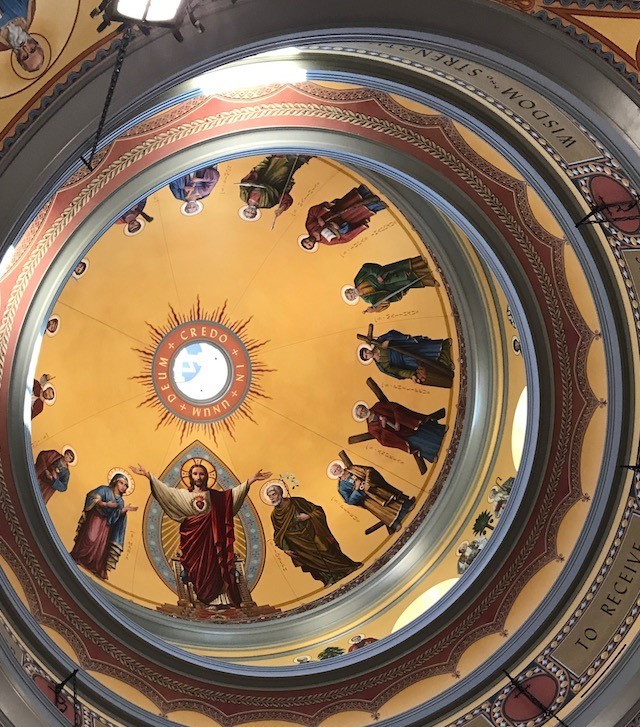There’s a symbiosis between entering into the nave of the magnificent new Cathedral of the Most Sacred Heart of Jesus on Northshore Drive and the opening lines of Joseph Haydn’s equally glorious “The Creation,” presented by the Knoxville Handel Society earlier this week.
Past the tall columns on the church porch and through the front doors of the cathedral, into the narthex of Sacred Heart is an intentional quieting experience. One is leaving the profane outside world and entering the reality of sacred space. It’s a brief space intended for preparation.
The experience completely transforms again when one passes through the interior set of doors into the expansive cathedral nave, expansive in scale, lavishly appointed in both rich materials, rendered with superior craftsmanship, and spiritual symbolism.
Similarly, when conductor Wendell Boertje began the opening musical lines of the orchestra, there was a musical interpretation of the chaos that preceded creation.
Then the orchestra softened as the angel Raphael, beautifully sung by bass Andrew Wentzel, began the opening lines of Genesis: “In the beginning God created the heavens and the earth; and the earth was without form, and void; and darkness was upon the face of the deep,” The Bible’s familiar lines every church goer knows by heart.
The chorus also began to sing softly: “And the Spirit of God moved upon the face of the water. And God said, Let there be light: and there was…”
The next word “LIGHT” burst forth with such a blast of sound it equaled the moment of entering the nave.
It’s one of the great moments in late 18th century masses, along with the crying violins in the Lacrimosa section of Mozart’s Requiem and the Hallelujah Chorus in Handel’s Messiah.
It was brilliantly conducted by Boertje and set the tone for the entire performance by both the Handel Society chorus and the three soloists: soprano Jami Rogers Anderson, singing the role of angel Gabriel; tenor Mike Bundon, singing the role the angel Uriel; and Wentzel, as Raphael, along with harpsichordist Pam Robertson.
Managing these forces seemed a natural for Boertje. Managing his instrumental forces took a different level of skill.
Because the front railing and first row of pews were not removable, Boertje’s orchestra, composed of first-rate musicians, was spread across the narrow space across the front of the nave and into the side transepts.
Since the low instrument voices, double bass and cellos on one side and tympani on the other end, produce long sound waves in their low notes, these instruments could hear each other. But the short-wave lengths coming from the high string instruments in the middle were difficult to hear on either end.
None of this was probably noticeable back past the first few rows, largely due to Boertje’s conducting skills.
Also, clearly noticeable in this performance for the clear, precise diction in the chorus. Singing in one’s native language means overcoming common speech habits of leaving off terminal consonants because our ears are generally turned to fill those in.
But stretching words out in singing is another matter altogether. Much credit to the care of the chorus members and the attention to details by Boertje.
Contributing significantly to the success of “The Creation” was the superb singing by the soloists, especially the gorgeous trios at the end of part one, section 19 in part two and the quartet at the end.
With this performance, the Knoxville Handel Society, under the leadership of co-music directors Don King and Wendell Boertje, has firmly established itself as a choral ensemble capable of the great choral masterpieces and an organization deserving the city’s pride.

